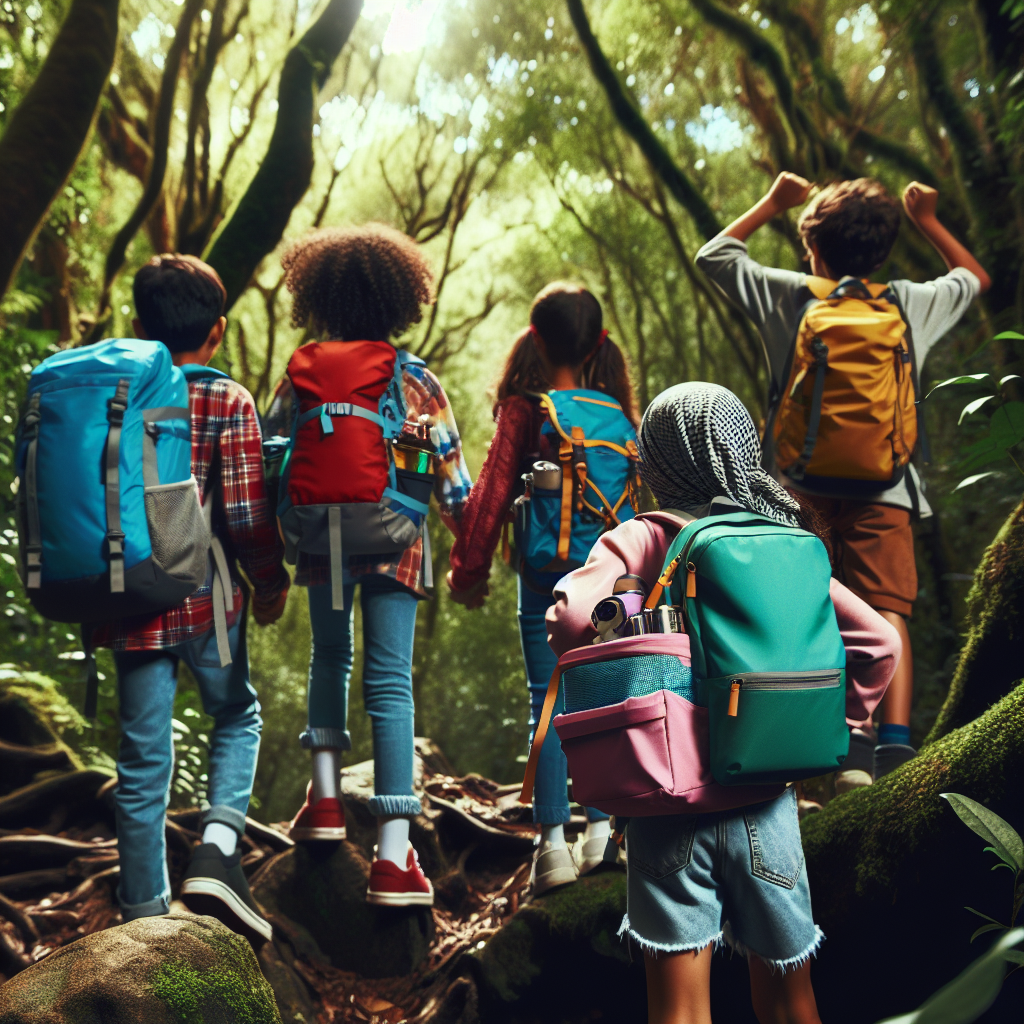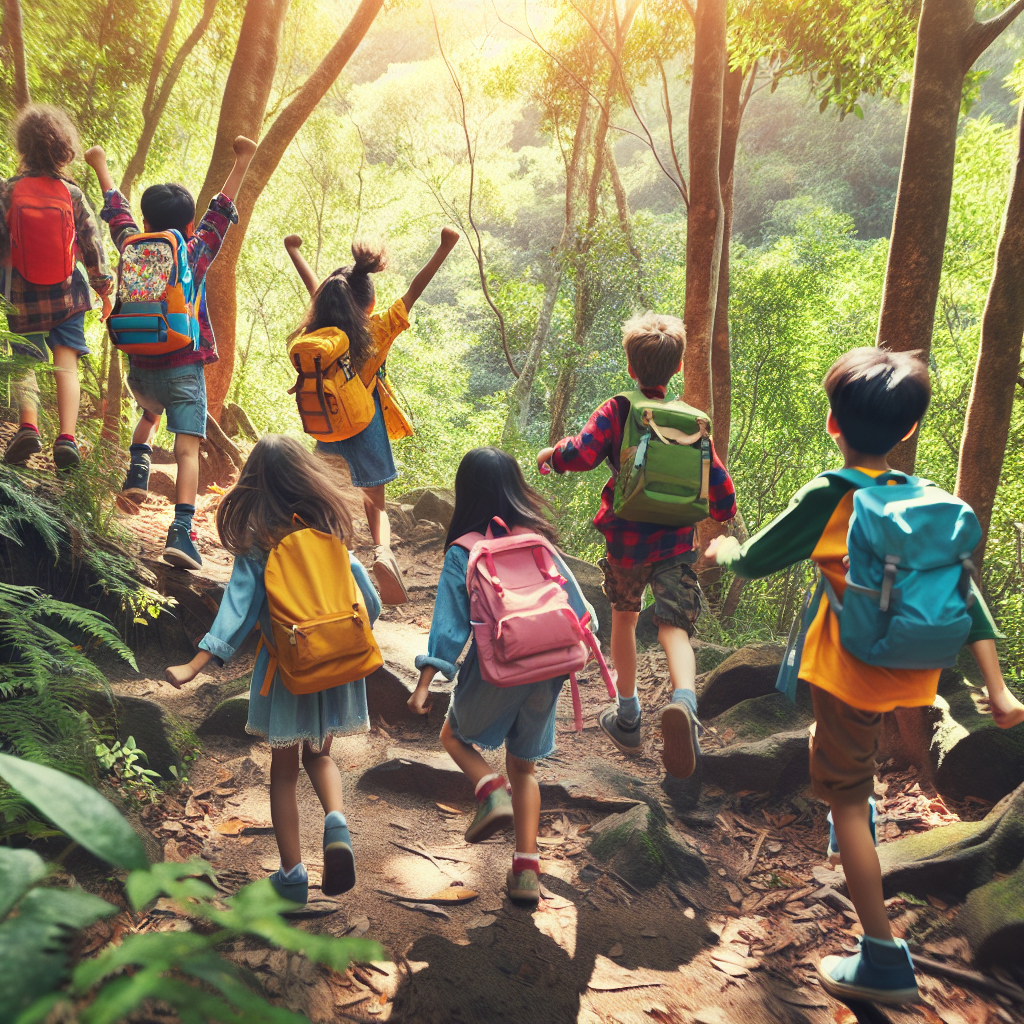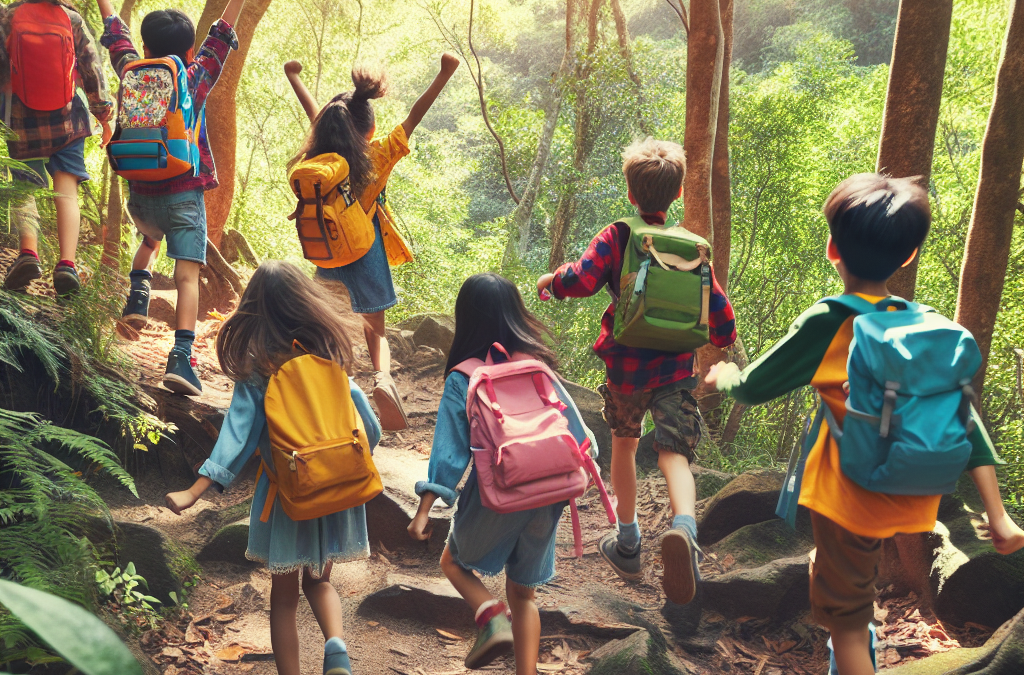You’re about to embark on a wonderfully rewarding journey, discovering the joys and challenges of hiking with your children. Kids on the Trail: Hiking with Children outlines a comprehensive guide filled with practical tips, safety precautions, and engaging trail activities to make your family’s outdoor adventures memorable and fun. It’s all about combining the heady thrill of exploring nature with educating your little ones about environmental conservation and the wonder of the great outdoors. There’s no better way to foster a love for nature in your kids than by hitting the trails together, and this article is your handy manual to get started.

Benefits of Hiking for Children
Hiking offers a bevy of benefits for children, affecting them both physically and psychologically. Providing kids the opportunity to hike gives them the freedom to enjoy nature while also actively facilitating their development in a diverse array of areas.
Physical Benefits
The physical benefits of hiking are extensive. It’s a great way to encourage physical activity among children in a fun and exciting way. Hiking challenges your child’s muscular strength, cardiovascular system, agility, and balance. It also helps to keep your child’s weight in check while improving their sleep quality due to the energy expended during the activity.
Mental Health Benefits
Out on the trail, children are given the chance to exercise their minds along with their bodies. The calming effect of nature helps to reduce stress and anxiety. Hiking can also improve kids’ moods, as physical activity causes the release of endorphins, the feel-good hormones. As children navigate trails, they’re practicing problem-solving and decision-making skills which nurtures their mental agility.
Educational Benefits
Hiking is education in disguise. While on the trail, children encounter diverse forms of wildlife, plants and geological features. This exposure piques their curiosity about the world, nurturing an ongoing love for learning. It provides a great opportunity to teach kids about geology, geography, botany, and entomology in engaging, hands-on ways.
Socialization Benefits
Hiking can be a social activity, providing opportunities for children to bond with family, make new friends, and learn to work cooperatively. These shared experiences promote closeness, enhance communication skills, and teach children about teamwork and leadership.
Increased Environmental Awareness
In our increasingly urbanized world, hiking provides a vital link to nature. It teaches children to appreciate the environment, promoting a sense of stewardship and respect for natural resources. They learn the significance of conservation, recycling and value of preserving natural habitats for wildlife.
Selecting the Right Hiking Trail
A good hike starts with choosing the appropriate trail. There are many factors to consider when selecting trails, especially when hiking with children.
Considering the Children’s Age
A child’s endurance capacity needs to be taken into account. Younger children may need shorter, flatter trails whereas older kids can handle longer distances and some elevation. Always try to match the length, steepness, and difficulty of the trail to the physical capabilities of your child.
Understanding the Difficulty Levels of Trails
Trails are often rated based on their difficulty level. It is important to understand these ratings and choose a trail that aligns with your child’s skill level. A too difficult trail may overwhelm and discourage a young hiker.
Assessing the Terrain
Take a look at the kind of terrain the trail presents. Will there be slippery rocks, steep slopes, or rough patches that might be too challenging for your child? Prior knowledge of the terrain can prevent accidents and ensure a safe and enjoyable hike.
Checking the Weather Conditions
Make sure to check the weather forecast before heading out. Sunny, calm days are ideally suited for kid-friendly hiking. It is important to remember that weather conditions can change quickly, especially in mountain areas.
Exploring the Accessibility Options
Always consider accessibility and other needs your child may have. Trails with amenities like restrooms, picnic spots, and nearby parking lots are great choices for families.
Preparation Before the Hiking Trip
Preparation is key when hiking with kids. It can make the difference between an enjoyable outing and a potentially challenging or even dangerous adventure.
Building the Stamina
Begin with shorter, easier hikes and gradually increase distance and difficulty. Regular walks or runs can also help build endurance. Ensure your kids are physically prepared before going on longer hiking trips.
Researching the Trail
Research the trail before you go. Know what to expect, where to start and end, what kind of flora and fauna you might encounter, availability of water sources, and any special rules or regulations.
Planning the Route Diagram
Creating a route diagram or itinerary will help you manage your time on the trail and make sure you hit all the key points of interest.
Pack Essentials
The right gear can make your hike safer and more comfortable. Always pack essentials like water, snacks, sunscreen, hats, and a first-aid kit.
Arranging for Safety Measures
Make sure everyone knows what to do in case of an emergency. Teach your children about basic survival skills like signalling for help, identifying edible plants, and understanding how to navigate.
Hiking Gear for Children
Well-chosen hiking gear can boost your child’s comfort and safety on the trail.
Appropriate Footwear
Quality hiking shoes for your child are a must. They should be comfortable, supportive, and waterproof.
Choosing the Right Backpack
A child’s backpack should be lightweight yet capable of carrying enough essentials. It should be the right size for your child and have padded straps for comfort.
Navigation Equipment
Even children can learn to navigate a trail. Simple navigation tools like a child-friendly compass and maps can be both fun and educational.
Importance of Layered Clothing
Dressing in layers helps to regulate body temperature during hiking. Start with a base layer that wicks away sweat, then add insulating layers and finish with a water-resistant outer layer.
Selecting Child-friendly Trekking Poles
Trekking poles can help balance and lessen strain on the knees. Consider selecting lightweight, adjustable trekking poles for your child.

Packing the Right Supplies
You must make sure you are well supplied for your hiking trip.
Food and Hydration
Pack high-energy snacks like nuts and fruit, and enough water for the day’s exertion. Using hydration packs can make carrying water easier.
First-aid Kit
A basic first-aid kit with band-aids, antiseptic wipes, tweezers, and other medical supplies can address minor injuries on the trail.
Sun and Bug Protection
Bring along sunscreen and bug repellent, as well as hats and sunglasses for protection from the sun.
Flashlight and Extra Batteries
It’s important to have a reliable source of light, such as a flashlight, in case you’re still on the trail after sunset. Always remember to pack extra batteries.
Multifunctional Tools
A multitool or Swiss Army knife can be very handy on the trail, helping with tasks like opening food packages or hauling out splinters.
Safety Measures on the Trail
Safety should be a top priority when hiking with kids.
Teaching Basic Survival Skills
Teach children basic survival skills such as reading a compass, recognizing trail markers, and understanding distress signals.
Educating About Local Fauna and Flora
Educate children about the types of animals and plants they may encounter on the hike. Make them aware of any poisonous plants, snakes, or dangerous wildlife in the area.
Ensuring Clear Communication
Ensure all members of the group can communicate effectively with each other. Teach children simple hand signals or whistle blasts for communicating from a distance.
Advising on Trail Etiquette
Educate your child about trail etiquette like staying on the trail to protect the environment, yielding to other hikers, and not littering.
Keeping Up to Date with Weather Updates
Weather conditions can change rapidly. Make sure you stay updated with weather forecasts and adjust your plans if necessary.
Encouraging and Motivating Kids during Hiking
To make the hiking experience enjoyable for kids, it’s crucial to keep them motivated and engaged.
Setting Achievable Goals
Set small, achievable goals like reaching the next tree or overlook. These small victories build confidence and keep children engaged in the hike.
Making the Trail Fun and Interactive
Turn the hike into a scavenger hunt or play games to make it more engaging. This makes the experience more exciting for kids and keeps them interested throughout the hike.
Recognizing Their Efforts
Praise your child’s effort along the way, particularly when they’ve achieved a goal. This will boost their morale and make them feel accomplished.
Taking Regular Breaks
Regular rest breaks are essential to prevent fatigue. They also provide opportunities to soak in the environment and have a snack.
Engaging Them in Map Reading
Involve your child in navigation. Teaching them how to read a trail map can be an exciting part of the trip and a useful skill.
Kid-friendly Hiking Activities
Hiking can involve much more than walking. Incorporating activities along the trail can make the hike fun and educational.
Nature Spotting
This is an opportunity to teach your kids about various species of animals and plants. Turn it into a game by keeping a tally of what each child spots.
Bird Watching
If the area is known for its bird diversity, make a game of spotting and identifying different bird species.
Trail Games
Trail games like “I Spy” or treasure hunts can add an extra layer of fun to the hike.
Photography Challenges
Give kids a camera and set photography challenges. This exercise can make them more observant and appreciative of their surroundings.
Geocaching
Geocaching combines hiking with the thrill of treasure hunting. It’s an engaging and exciting activity for children of all ages.
Post Hiking Activities
Post-hiking activities are as important as the hike itself.
Checking for Ticks or Injuries
After the hike, inspect your children for any ticks or injuries they might have incurred during the activity.
Proper Cleaning and Storing of Gear
Teach your children responsibility by involving them in cleaning and storing hiking gear. This encourages them to take good care of their equipment.
Discussions about the Hiking Experience
Discuss the hike with your children afterward. It lets them reflect on the experience and share their thoughts, observations and feelings about the trip.
Planning for the Next Hike
Once the excitement of the completed hike subsides, involve your kids in planning for the next one. This encourages them to continue with this healthy and rewarding activity.
The Role of Parents or Guardians
Parents or guardians play a crucial role in making a child’s hiking experience safe and enjoyable.
Providing Proper Supervision
Children should always be supervised while hiking. Make sure they remain on the trail and keep them within sight at all times.
Promoting a Positive Attitude
Children often take cues from adults, so maintain a positive and enthusiastic attitude. If they see you enjoying the hike, they’re more likely to enjoy it too.
Teaching by Example
Show your child how to behave on a trail by practicing good trail manners yourself. Teach them about leaving no trace, being respectful of wildlife, and sharing the trail.
Handling Emergency Situations
In case of emergencies, stay calm and decisive. Your child will look to you for guidance, so be prepared to act quickly and responsibly.
Stimulating a Love for Nature
One of the greatest gifts you can provide your child is a love for nature, which can be instilled through regular hikes and outdoor explorations. Demonstrate your own respect and fascination for nature and this is likely to rub off on your kids too.
In summary, hiking offers a trove of benefits for children, form physical health, mental well-being, learning opportunities, social skills, to environmental awareness. But a successful, enjoyable hike depends greatly on proper preparation, selecting the right trail and hike-friendly equipment, and maintaining an exciting, positive attitude throughout.

